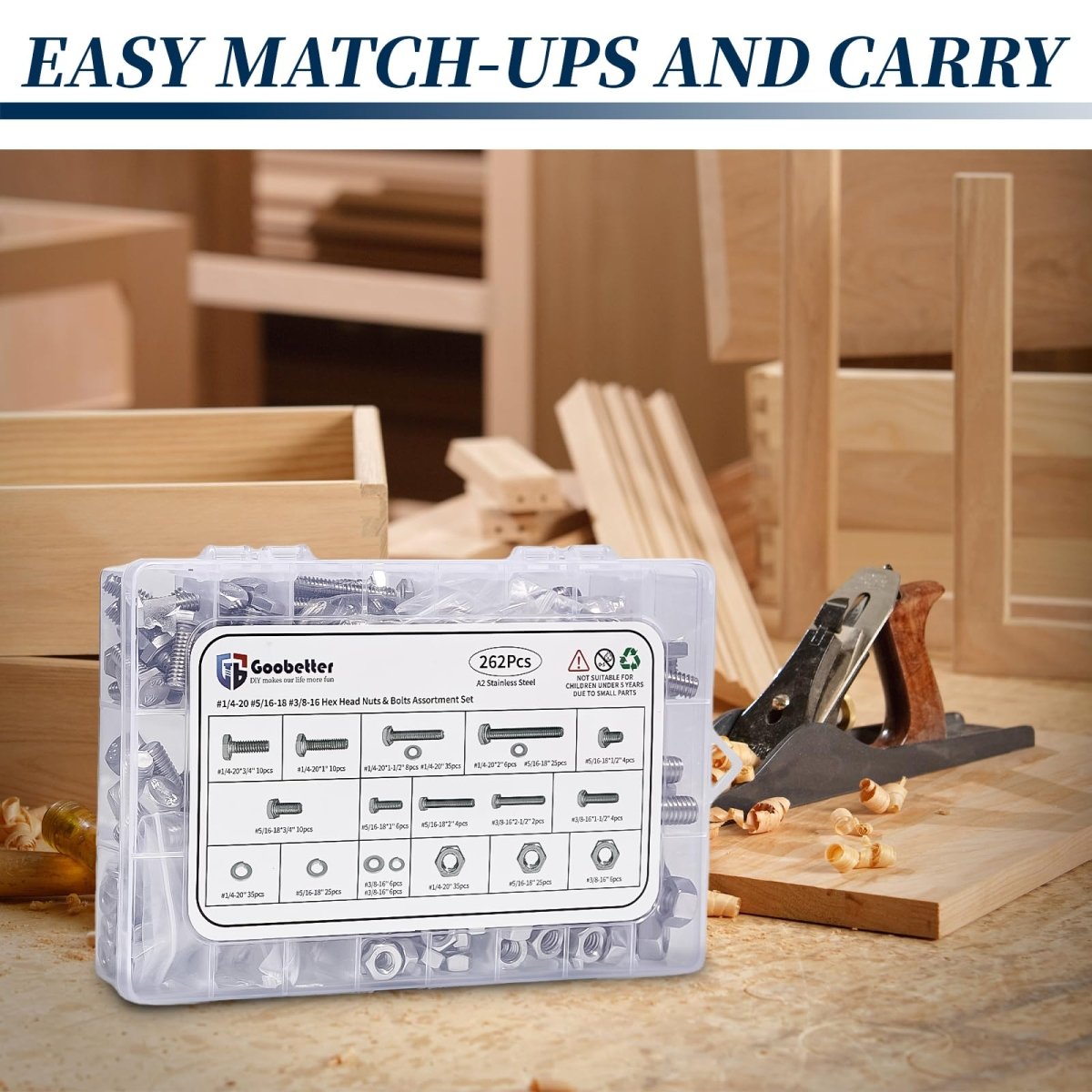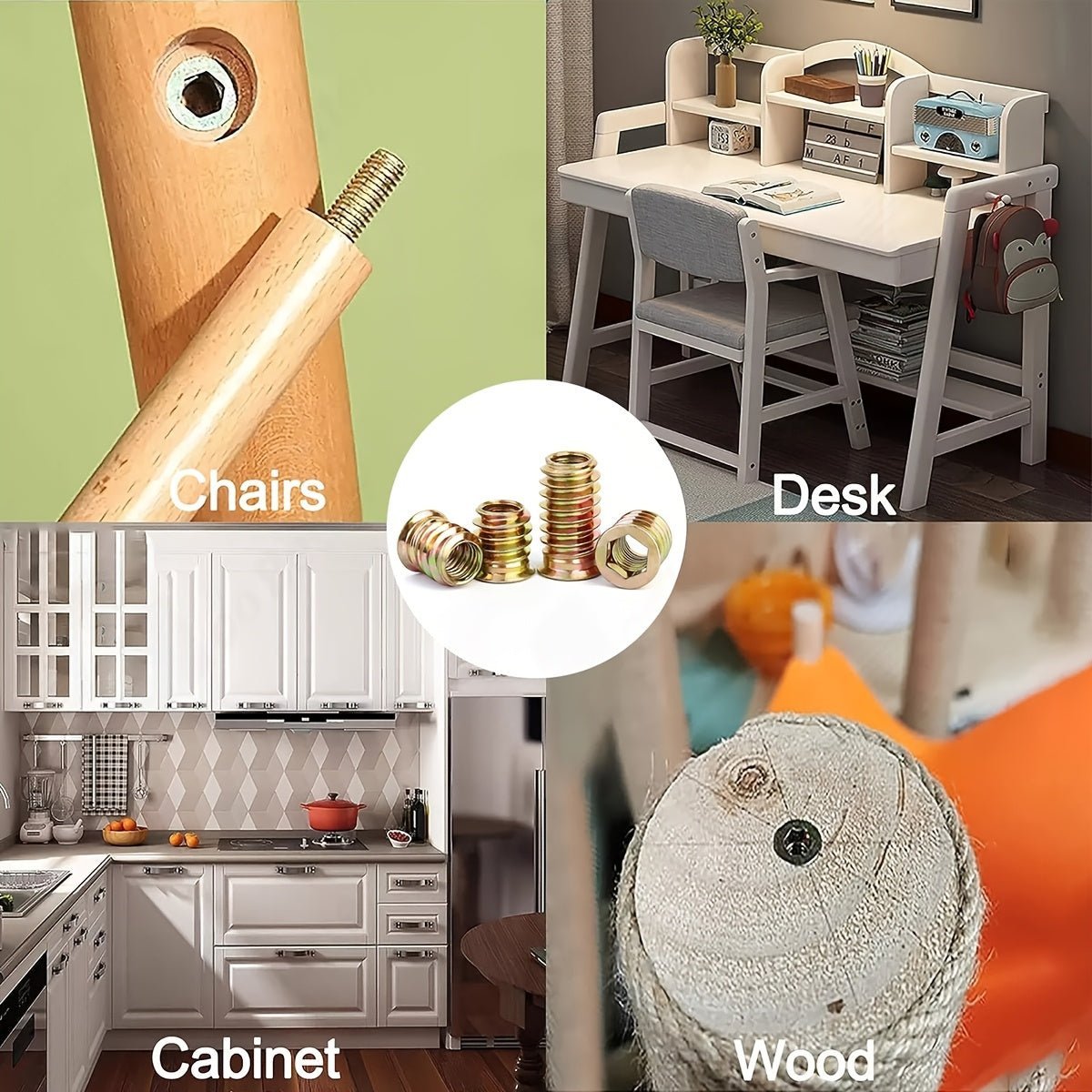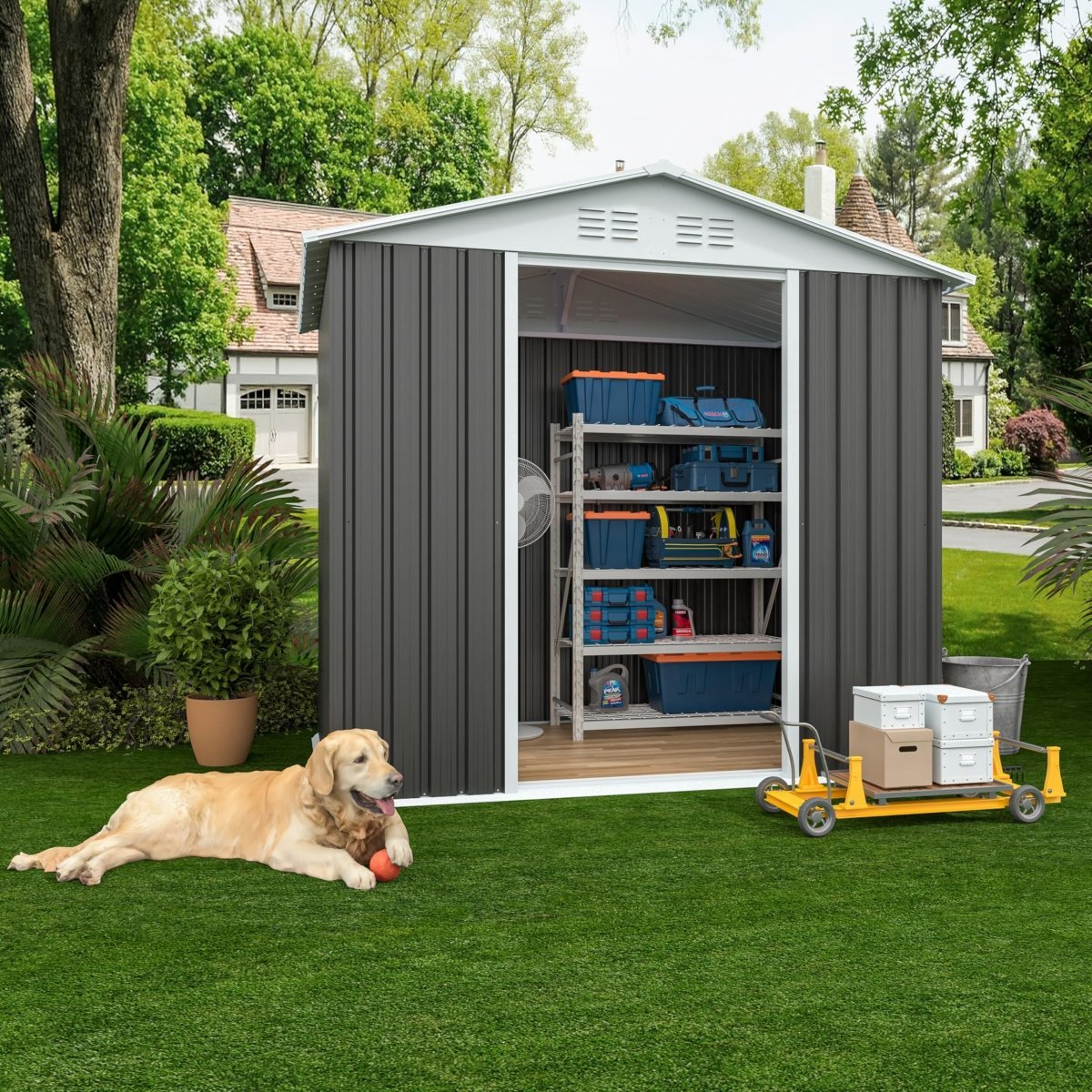Table of Contents
-
The Unseen Hero: Bolts in Your Daily Life
-
The Science Bit: What Makes Stainless Steel "Stainless"?
-
Why Stainless Steel Shines for Bolts (Pun Intended!)
-
Strength Showdown: Is Stainless Steel Strong Enough?
-
Temperature Tango: Handling Heat and Cold
-
The Look That Lasts: More Than Just Function
-
Stainless Steel vs. The Competition: Carbon Steel, Zinc, Brass
-
Busting Common Stainless Steel Bolt Myths
-
When & Where to Choose Stainless Steel Bolts (Your Project Guide)
-
The Verdict: Is Stainless Steel Good for Bolts?
-
Your Next Step: Choosing Quality Stainless Fasteners
1. The Unseen Hero: Bolts in Your Daily Life
Let's be honest. When was the last time you thought about the humble bolt? Probably when one snapped off in your deck, or you struggled to loosen a rust-welded nut on your bike, or that shiny new outdoor furniture kit arrived with fasteners already showing a hint of orange. We take them for granted, these small metal threads holding our world together – literally. From the deck you relax on, the shelves holding your tools, the brakes on your car, to the playground equipment your kids use, bolts are the unsung heroes of structural integrity.
Choosing the right bolt isn't just about grabbing whatever's cheapest at the hardware store. It's about understanding the job, the environment, and the long-term consequences of that choice. Get it wrong, and you face frustration, potential failure, and costly replacements. Get it right, and you build something that lasts, performs safely, and looks good doing it. That’s where the stainless steel question comes in. Is it hype, or is it the real deal for the bolts you need?
2. The Science Bit: What Makes Stainless Steel "Stainless"?
Alright, let's ditch the jargon but keep the essentials. Regular steel? It's mostly iron. Iron loves to react with oxygen and water – hello, rust! Stainless steel is essentially steel plus a superhero alloy called Chromium (usually at least 10.5%, often much more). Here’s the magic:
-
The Chromium Shield: When chromium meets oxygen (which is everywhere in our air), it forms an incredibly thin, invisible, and self-healing layer of chromium oxide on the surface of the metal. Think of it like a force field.
-
Self-Repairing: If this layer gets scratched or damaged (which can happen during installation or use), as long as oxygen is present, the chromium reacts again and patches up the shield. This is the core of stainless steel's legendary corrosion resistance.
-
The Nickel Boost (Especially for 304): The most common stainless steel for bolts like ours (304, also known as A2 stainless) adds another key player: Nickel (around 8-10.5%). Nickel significantly enhances the formation and stability of that protective chromium oxide layer. It also makes the steel tougher, more ductile (less likely to crack under stress), and improves its performance in low temperatures and its overall formability. It gives 304 its excellent balance of corrosion resistance, strength, and workability.
-
The Molybdenum Muscle (316 Stainless): For even harsher environments – think constant saltwater spray, heavy industrial chemicals, or highly acidic conditions – 316 stainless (A4) adds Molybdenum. This turbocharges the corrosion resistance, particularly against pitting and crevice corrosion. While fantastic, 316 is generally more expensive and slightly less strong than equivalent grades of 304. For most DIY and general-purpose applications, 304 offers the best value and performance.
So, stainless isn't a coating that can wear off. It's an integral part of the metal itself. That's why it lasts.
3. Why Stainless Steel Shines for Bolts (Pun Intended!)
Okay, science lesson over. Why does this matter for your bolts? Here’s where stainless steel truly earns its keep:
-
The Rust-Busting Champion: This is the #1 reason people choose stainless. Say goodbye to ugly red stains weakening your connections and staining your wood or concrete. Whether it's humid Florida air, rainy Pacific Northwest winters, de-icing salts on your driveway, coastal salt spray, or just condensation in a garage or shed, stainless bolts laugh in the face of corrosion where ordinary steel bolts would surrender. I've seen decks built with standard bolts needing complete re-fastening in 5 years in harsh climates, while the stainless ones on the same deck look practically new a decade later. That’s real value.
-
Built to Last (Durability): That corrosion resistance directly translates to long-term structural integrity. A bolt weakened by rust is a bolt on borrowed time. Stainless maintains its strength profile over vastly longer periods in corrosive environments. It’s an investment in longevity.
-
Hygiene Helper: That smooth, non-porous chromium oxide layer makes stainless steel resistant to bacterial growth and easy to clean. This is crucial for applications like food processing equipment (even a homemade smoker or BBQ accessory), medical devices, marine applications, or anywhere cleanliness is paramount.
-
Maintenance Minimizer: Think of the time and hassle saved. No more scraping rust, applying rust converters, or constantly replacing corroded fasteners. Install stainless bolts correctly, and you can largely forget about them. Perfect for hard-to-reach places or projects where you simply want "install and forget" reliability.
-
The Aesthetic Edge: Let's not pretend looks don't matter. The clean, bright, silvery finish of stainless steel (especially when polished) simply looks professional and high-quality. It maintains its appearance far better than plated steels, which can discolor, chip, or wear. Great for visible fasteners on furniture, railings, automotive detailing, or decorative projects.
4. Strength Showdown: Is Stainless Steel Strong Enough?
This is a common and valid concern. We've all heard "stainless isn't as strong as regular steel." Like many generalizations, it's partially true but often misunderstood and overstated for typical applications.
-
The Grade Matters (A Lot!): You cannot just say "stainless steel." Strength varies dramatically by the specific alloy and its hardness grade. The most common stainless bolt grade is A2-70 (304 stainless, cold-worked to a tensile strength of 700 MPa minimum). This is the workhorse.
-
A2-70 vs. Common Steel Grades:
-
Medium Carbon Steel (Grade 5 - G5): A common, strong "gold" zinc-plated bolt. Its tensile strength is very similar to A2-70 stainless (120,000 PSI min). In terms of pure tensile strength, they are comparable.
-
High-Strength Alloy Steel (Grade 8 - G8): This is significantly stronger (150,000 PSI min tensile) than A2-70 stainless. For critical, high-stress applications like automotive suspension or heavy machinery, Grade 8 is often the go-to.
-
-
The Real-World Takeaway:
-
For the vast majority of DIY projects – building decks, sheds, furniture, shelving, fencing, play structures, automotive accessories (non-suspension), general repairs – A2-70 stainless (304) bolts provide MORE than adequate strength. Their strength is comparable to the ubiquitous Grade 5 bolts found everywhere.
-
Where Corrosion is a Factor, Stainless Wins Long-Term: Remember, a Grade 5 bolt might start stronger, but if it rusts significantly, its strength plummets. A stainless bolt maintains its strength over time in harsh environments where a carbon steel bolt would corrode and weaken. The sustained strength of stainless is often superior in real-world conditions.
-
Know Your Project's Demands: If you're building a critical load-bearing structure (like a treehouse support beam, heavy trailer, or engine component) under very high constant stress, and corrosion is minimal, a high-strength alloy steel (Grade 8) might be the optimal choice purely for initial strength. However, for 90%+ of home and workshop applications, A2-70 stainless offers a superb blend of sufficient strength and unbeatable corrosion resistance.
-
5. Temperature Tango: Handling Heat and Cold
Bolts aren't just room-temperature creatures. How does stainless fare?
-
Heat Resistance: Standard 304 stainless steel bolts (A2-70) retain their strength well up to temperatures around 800-900°F (427-482°C). This makes them perfectly suitable for:
-
Engine compartments (away from exhaust manifolds)
-
BBQ grills and smokers
-
Ovens and dryers (exterior components)
-
Heating systems
-
Industrial equipment (within temp range)
-
Important Note: Prolonged exposure to very high temperatures (like direct contact with exhaust systems) can cause "sensitization" in 304, reducing its corrosion resistance. For extreme heat (like exhaust flanges), specific high-temperature alloys (like 321 stainless) or Inconel are used.
-
-
Cold Toughness: Stainless steel, particularly grades like 304 with nickel, performs exceptionally well in sub-zero temperatures. It remains ductile and resistant to brittle fracture, unlike some carbon steels which can become brittle. This is crucial for:
-
Refrigeration units
-
Freezers
-
Outdoor structures in freezing climates
-
Cryogenic applications
-
-
Thermal Expansion: Stainless steel has a slightly higher rate of thermal expansion than carbon steel. This is rarely an issue in standard applications but can be a consideration in very large structures or where dissimilar metals are clamped tightly together across wide temperature ranges. Proper joint design usually mitigates this.
6. The Look That Lasts: More Than Just Function
While we often focus purely on mechanics, the appearance of hardware matters. Rust streaks on white outdoor furniture? Flaking, discolored zinc plating on a visible bracket? Not exactly appealing.
-
Consistent Finish: Stainless steel, particularly if it has a uniform mill finish or is lightly polished, maintains its clean, silvery-gray appearance remarkably well. It won't chip or peel like platings.
-
No Rust Stains: This is huge for aesthetics. Stainless bolts won't bleed rust onto wood decks, stone patios, light-colored furniture, boats, or vehicles. This preserves the beauty of your entire project.
-
Professional Polish: For applications where hardware is a feature – think custom motorcycles, high-end furniture, architectural details, retail displays – polished stainless steel fasteners offer a premium, durable, and clean look that ages gracefully. It signals quality.
-
Value Perception: Using stainless subconsciously signals to others (and yourself!) that you invested in quality and durability for the project. It elevates the perceived value.
7. Stainless Steel vs. The Competition: Carbon Steel, Zinc, Brass
Let's put stainless head-to-head with other common bolt materials to see where it truly excels:
-
Carbon Steel (Unplated):
-
Pros: Lowest cost, readily available, very high strength options (Grade 8).
-
Cons: Rusts very easily, even in mildly humid conditions. Weakens as it corrodes. Unattractive rust stains.
-
Verdict: Only suitable for strictly indoor, dry, non-critical applications. Avoid anything exposed to moisture or outdoors. Not a practical choice for most DIYers.
-
-
Zinc-Plated Steel (Common "Gold" or "Silver" Bolts - Often Grade 2 or 5):
-
Pros: Low cost, widely available, better corrosion resistance than bare carbon steel (initially). Grade 5 offers good strength.
-
Cons: The zinc plating is a sacrificial coating. It wears off (through abrasion), scratches off, or corrodes away over time, especially in harsh environments (salt, acid rain). Once compromised, the underlying steel rusts rapidly. Appearance degrades. Not suitable for damp or outdoor long-term use. "Galvanized" usually offers a slightly thicker, more durable zinc coating than standard zinc plating.
-
Verdict: Okay for short-term projects, dry indoor use, or very protected outdoor locations. Expect limited lifespan in challenging conditions. Requires maintenance/replacement.
-
-
Hot-Dip Galvanized (HDG) Steel:
-
Pros: Thick, durable zinc coating. Much better corrosion resistance than standard zinc plating. Good for structural outdoor applications (fencing, framing).
-
Cons: Rough, lumpy appearance. Coating thickness can cause threading issues if not tapped post-galvanizing. The zinc coating will eventually degrade, exposing the steel. Can react with pressure-treated wood chemicals (requires barrier). Less aesthetically pleasing than stainless.
-
Verdict: Excellent for heavy-duty structural applications where maximum corrosion resistance for carbon steel is needed and appearance isn't critical. More expensive than standard zinc plating. A good alternative to stainless for large, high-strength structural bolts where cost is a major factor and aesthetics secondary.
-
-
Brass:
-
Pros: Good corrosion resistance (especially to saltwater), attractive gold-like appearance, non-magnetic.
-
Cons: Significantly weaker than steel or stainless steel bolts. Softer material, more prone to thread stripping and shear failure. More expensive than steel. Can dezincify in certain aggressive waters.
-
Verdict: Primarily used for decorative purposes, low-stress marine applications (like fittings), or electrical applications where non-magnetic properties are essential. Not suitable for load-bearing structural tasks.
-
The Stainless Steel Advantage Recap: Offers the best combination of strong corrosion resistance (often surpassing HDG long-term), good strength (matching Grade 5), durability, and aesthetics. It's the all-rounder champion for demanding environments and visible applications.
8. Busting Common Stainless Steel Bolt Myths
Time to clear up some persistent misconceptions:
-
Myth 1: "Stainless Steel Doesn't Rust."
-
Reality: It's "stainless," not "stainproof." Under extreme conditions – lack of oxygen (tight crevices), constant exposure to strong acids or chlorides, contamination with carbon steel particles ("free iron") causing rust spots, or highly abrasive environments that constantly damage the passive layer faster than it can reform – corrosion can occur. However, for typical home, automotive, marine, and outdoor use, 304 and 316 stainless provide outstanding, long-lasting rust resistance far superior to plated steels. Proper selection (e.g., 316 for saltwater immersion) mitigates most risks.
-
-
Myth 2: "Stainless Steel Bolts are Non-Magnetic."
-
Reality: This depends heavily on the specific alloy. Common austenitic stainless steels like 304 and 316 are generally very weakly magnetic or non-magnetic in their annealed state (soft). However, the cold-working process used to make bolts stronger (like A2-70 or A4-80) can induce a degree of magnetism, especially near the worked surfaces (heads, threads). Don't rely on magnetism to identify stainless steel! 400-series stainless (like 410, 430) is strongly magnetic but less corrosion resistant than 304/316.
-
-
Myth 3: "Stainless Steel Bolts Always Gall (Seize) When Tightening."
-
Reality: Galling (cold welding of threads under pressure and friction) can happen with stainless, especially austenitic grades like 304/316, more easily than with carbon steel. It's preventable!
-
Use Lubrication: Always lubricate stainless threads before assembly. Use anti-seize compound (nickel-based is excellent for high temps) or a light machine oil/grease. This drastically reduces friction.
-
Don't Over-Tighten: Use a torque wrench if possible. Slow down during final tightening – high speed generates heat and friction, promoting galling.
-
Avoid Mixing Alloys: Using nuts/washers of a different stainless alloy or hardness can increase galling risk. Use matched sets where possible.
-
Consider Prevailing Torque Lock Nuts: These can sometimes reduce galling compared to free-spinning nuts.
-
-
-
Myth 4: "Stainless Steel is Too Expensive."
-
Reality: While the upfront cost per bolt is higher than zinc-plated or basic carbon steel, consider the Total Cost of Ownership (TCO). How much will it cost you in time, labor, materials, and frustration to replace rusted-out bolts in 2-5 years? How much value does preventing rust stains or structural failure add? For critical or hard-to-reach applications, stainless is almost always the more economical choice long-term. It's an investment in durability.
-
9. When & Where to Choose Stainless Steel Bolts (Your Project Guide)
So, where does stainless steel truly shine? Here’s your practical checklist:
-
Outdoor Projects (The #1 Domain!):
-
Decks, pergolas, gazebos, fences, gates
-
Outdoor furniture (tables, chairs, swingsets)
-
Mailbox posts, light fixtures
-
BBQ islands, grill components
-
Playground equipment
-
Garden structures, raised beds (especially with treated wood)
-
Boat docks, marine hardware (Use 316/A4 for constant saltwater immersion)
-
-
High Humidity/Moisture Areas:
-
Bathrooms, kitchens, laundry rooms
-
Greenhouses, pool equipment housings
-
Basements, crawl spaces
-
Boats (interior and exterior - 316/A4 for critical saltwater areas)
-
-
Automotive & Marine:
-
Engine bays (away from extreme heat sources), underbody components (exposed to road salt/spray)
-
Trailers (hitches, frames, decking - especially near saltwater)
-
Trim, accessories, license plates
-
Boat fittings, railings, hardware (316/A4 is strongly recommended for saltwater use)
-
-
Applications Needing Cleanliness/Hygiene:
-
Food processing equipment (even homebrew setups, smokers)
-
Medical device prototypes/fixtures
-
Laboratory equipment
-
Brewing equipment
-
-
Visible Hardware & Aesthetics:
-
Furniture (indoor and outdoor)
-
Railings, staircases
-
Retail displays
-
Custom vehicles, motorcycles
-
Architectural metalwork
-
-
Chemical Exposure:
-
Around pools (chlorine)
-
Agricultural equipment (fertilizers)
-
Mild industrial settings (Use 316/A4 for harsher chemicals)
-
-
Avoid Galvanic Corrosion: Be cautious when connecting stainless steel directly to aluminum or regular steel in the presence of an electrolyte (like saltwater or acid rain). This can cause accelerated corrosion of the less noble metal (usually aluminum or steel). Use insulating washers or choose compatible metals. Stainless to stainless is generally fine.
10. The Verdict: Is Stainless Steel Good for Bolts?
Unequivocally YES. For the vast majority of applications faced by home DIYers, tradespeople, marine enthusiasts, and automotive tinkerers, stainless steel bolts, particularly Grade 304 (A2-70), represent an outstanding choice.
It delivers the crucial combination that matters most:
-
Superior Corrosion Resistance: Lasting protection against rust and degradation.
-
Reliable Strength: More than adequate for most non-extreme structural tasks (matching common Grade 5).
-
Long-Term Durability: Built to last, minimizing replacements and maintenance.
-
Excellent Aesthetics: Maintains a clean, professional look.
-
Good Value Over Time: Lower total cost of ownership compared to constantly replacing corroded fasteners.
While high-strength alloy steels (Grade 8) win in pure, initial tensile strength for critical, high-stress applications in dry environments, and hot-dip galvanized steel is a robust option for large structural projects where cost is paramount, stainless steel is the undisputed all-around champion. It’s the smart choice for projects exposed to the elements, moisture, chemicals, or where appearance and long-term reliability are priorities.
11. Your Next Step: Choosing Quality Stainless Fasteners
Not all stainless bolts are created equal. Protect your investment and your projects:
-
Know the Grade: For general purpose, A2-70 (304) is ideal. For constant saltwater immersion or harsh chemicals, specify A4-80 (316). Ensure it's marked or certified.
-
Buy from Reputable Sources: Avoid bargain-bin mystery metal. Cheap "stainless" fasteners might be inferior alloys or mislabeled. Trust suppliers who clearly state the grade and standards.
-
Consider the Kit: Projects rarely need just one bolt. Save time and ensure compatibility with a comprehensive kit like our 304 Stainless Steel Bolt & Nut Kit. It provides a wide range of the most common sizes and types (hex bolts, nuts, washers) in high-quality 304 stainless steel (A2-70), perfect for tackling virtually any home, workshop, automotive, or outdoor project with confidence.
-
Install Correctly: Remember lubrication to prevent galling, use appropriate torque, and consider galvanic isolation if connecting to dissimilar metals in corrosive environments.
Stop replacing rusty bolts. Build it right, build it once, build it to last. Choose stainless steel.
Ready to upgrade your projects with durable, corrosion-resistant fasteners? Explore our premium 304 Stainless Steel Bolt & Nut Kit – the smart choice for DIYers who demand quality and longevity.








